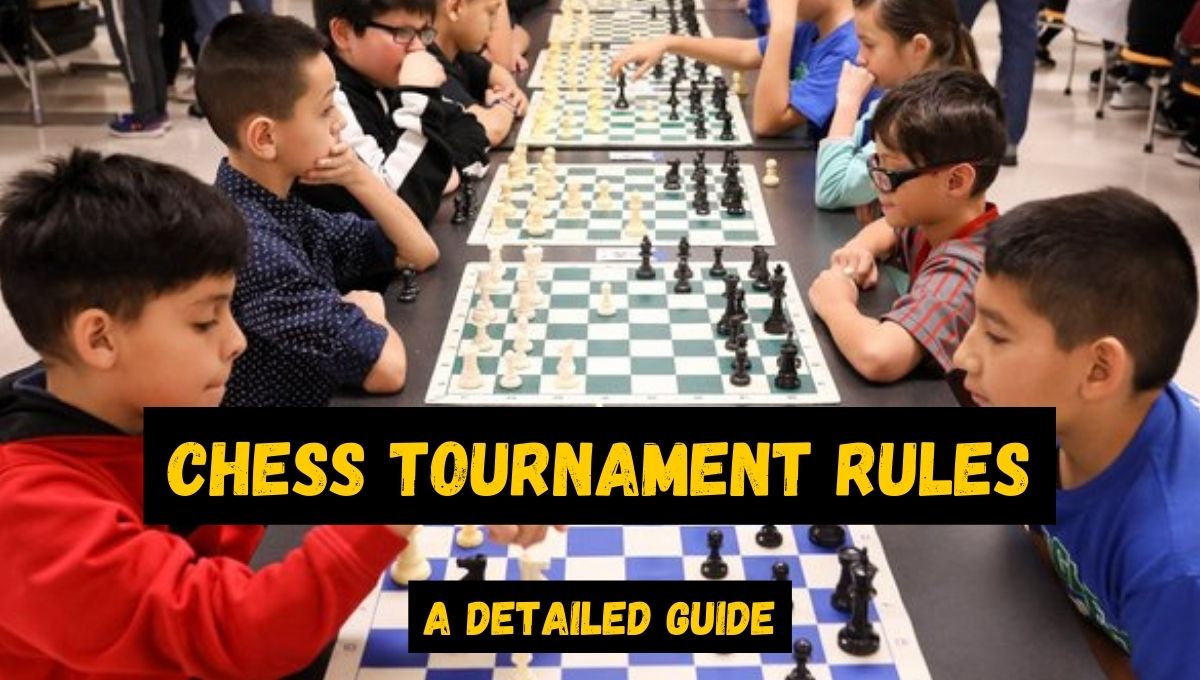There are different types of chess tournaments, such as round-robin, Swiss, and knockout tournaments, organized by various federations and chess governing bodies, including FIDE, USCF, ECF, and others.
In this guide, I will explain the rules for these tournaments. If you’re interested in learning about the rating systems used by different chess federations, please check out this article.
Basic Tournament Rules:
1. Time Controls
Chess tournaments typically use time controls to ensure games progress at a reasonable pace. This involves setting a specific amount of time for each player to make their moves.
Common time control formats include Classical, Rapid, Blitz, and Armageddon, each with varying time limits.
2. Chess Clocks
Games are played with chess clocks that have two time counters, one for each player.
A player’s clock runs only when it’s their turn to move. When they make a move, they press a button to stop their clock and start their opponent’s clock.
3. Time Forfeits
If a player’s time runs out before they make a move, they lose the game, regardless of the position on the board. The only exception is that your opponent don’t have enough material to check mate you. In that case, it will be a draw.
4. Touch-Move Rule
If a player touches one of their pieces, they must move that piece if it has a legal move. If a player touches an opponent’s piece, they must capture it if possible.
The only time this rule is not applicable is at the start of the game but you have to tell your opponent that I want to adjust my pieces just like Carlsen is doing in the video below:
5. Illegal Moves
Making an illegal move results in a penalty, mostly it’s a 1 time warning or time taken off your clock and the position is restored to its previous state. But if repeated or done some other illegal move you’ll be declared lost by the arbiter.
6. Scoring
In most tournaments, players earn points based on the outcome of their games. A win typically earns one point, a draw earns half a point for both players, and a loss earns zero points.
In a knock out tournament it’s a bit different, loser gets eliminated and winner moves on to the next round. Number 1 elimination tournament in the world is the Chess World Cup.
7. Pairings
In different kinds of tournaments players are paired against each other in different ways. Check out these separate articles on how pairings are done in a round robin, Swiss, and knockout tournaments.
8. Draws
Draws can occur in chess through various means, including the fifty-move rule (if 50 moves are made without a pawn move or capture), threefold repetition (the same position occurs three times with the same player to move), or insufficient material to checkmate.
In case of a draw players play further games with each other to decide a winner in a knock out tournament. But in a round robin and swiss tournament it’s 0.5 points to each of them and they move on to the next round.
9. Spectators
Spectators are generally allowed in chess tournaments, but they must adhere to the tournament’s rules and maintain silence during play.
10. Electronic Devices
Players are usually not allowed to have electronic devices, including cell phones, during their games.
11. Chess Notation
It’s one of the many awkward rules but players are required to record their moves using standard chess notation, in longer games.
12. Tournament Director
A designated official, often referred to as the Tournament Director or Arbiter, is responsible for enforcing the rules, resolving disputes, and maintaining order during the tournament.
13. Tiebreakers
In case of tie scores, various tiebreaker systems may be used to determine final rankings, such as Sonneborn-Berger, Buchholz, or head-to-head results.

